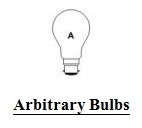Induction Motors Duty Cycles
Type of Duty The following shall be the duty types: Sl -Continuous duty The motor works at a constant load for enough time to reach temperature equilibrium. S2 -Short time duty The motor works at a constant load, but not long enough to reach temperature equilibrium. The rest periods are long enough for the motor to reach ambient temperature S3 -Intermittent periodic duty Sequential, identical run and rest cycles with constant load. Temperature equilibrium is never reached. Starting current has little effect on temperature rise S4 -Intermittent periodic duty with starting Sequential, identical start, run and rest cycles with constant load. Temperature equilibrium is not reached, but starting current affects temperature rise. S5 -Intermittent periodic duty with starting and electric braking Sequential, identical cycles of starting, running at constant load and running with no load. No rest periods. S6 -Continuous duty with intermittent periodic loading Sequential, identical cycles of run...

